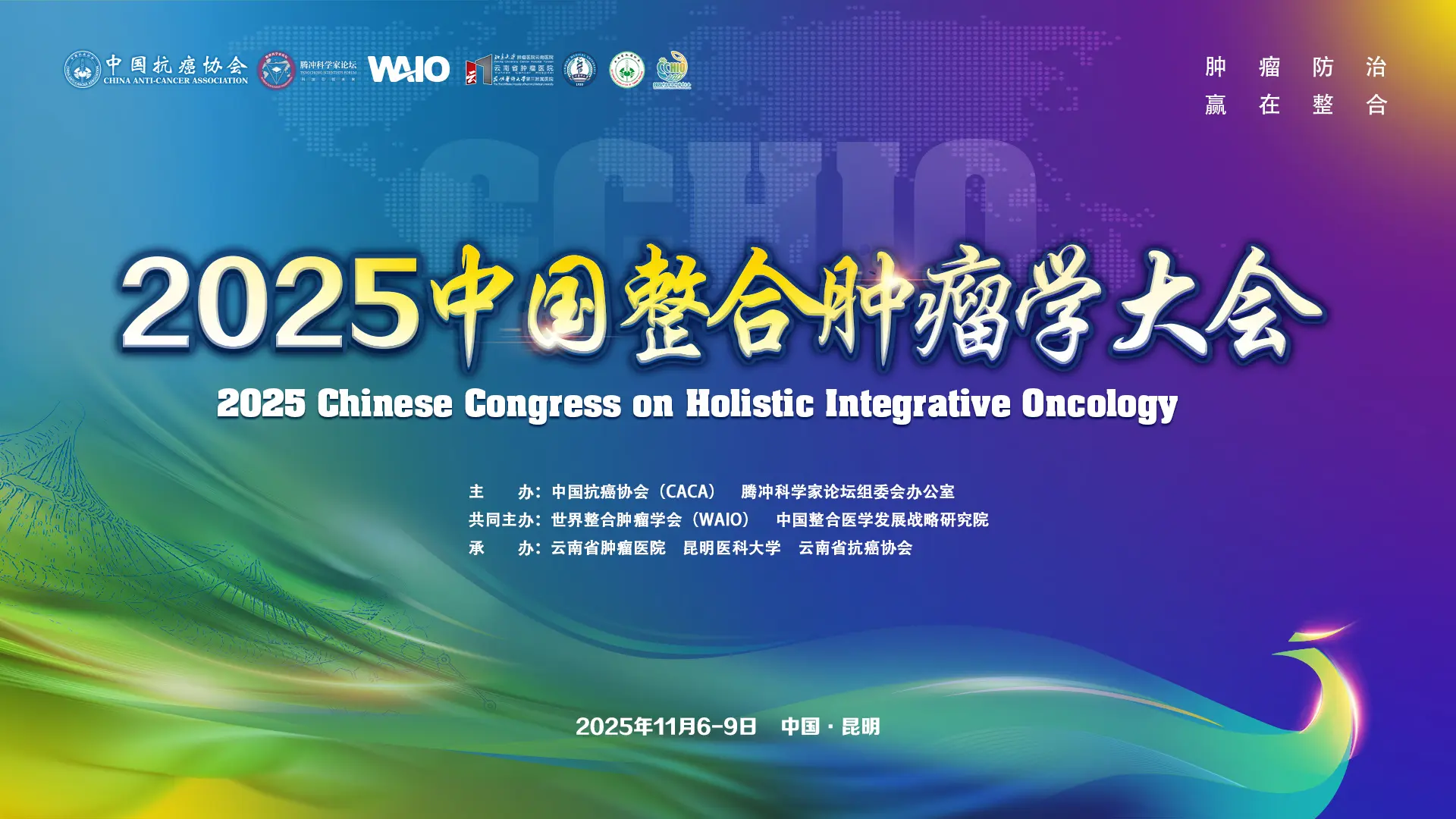乳腺癌(BC)是女性最常见的恶性肿瘤之一,其发病率逐年上升。免疫疗法是治疗癌症的一种有效且至关重要的方法,能够提高宿主识别癌细胞的能力。近年来,肿瘤免疫治疗药物的研究加速了三阴性乳腺癌(TNBC)的免疫治疗进展。FDA(美国食品药品监督管理局)已批准阿替利珠单抗联合紫杉醇用于转移性PD-L1阳性TNBC患者的一线治疗。
近日,npj Breast Cancer 期刊发表的一篇综述,阐述了BC免疫治疗的现状与展望,本篇概述了目前在临床试验中研究的转移性BC和早期BC的免疫检查点抑制剂联合治疗[1]。

BC是全球范围内女性最常见的恶性肿瘤,也是导致癌症相关死亡的主要原因[24, 25]。免疫疗法改变了癌症治疗的理念[26]。与传统疗法相比,免疫疗法具有能够产生对抗肿瘤反应长期记忆的优点[27]。
自2000年以来,BC免疫治疗的临床试验数量持续增加。2018年,新辅助治疗临床试验的数量超过了辅助治疗临床试验的数量,2期临床试验相关的研究不断增加表明,全球正在加紧研究新的BC免疫治疗策略[1]。
需要注意的是,免疫浸润的程度和组成在 BC 亚型之间以及在每个亚型内变化均很大[28,29]。因此,并非所有的 BC 患者都能从相同的免疫治疗策略中获益[28]。除了基于不同BC亚型制定免疫治疗策略以外,还需要预测生物标志物来定制个体化治疗方案。PD-L1免疫组织化学(IHC)的表达是最广泛使用的生物标志物,但这还不够,因为它似乎只在转移性 TNBC (mTNBC)中具有预测价值。肿瘤突变负荷(TMB) 是肿瘤异质性和免疫原性的标志,因为突变的抗原被 T 细胞识别,从而引发细胞毒性反应。突变负荷在 BC 中变化很大,并且表现出高 TMB 的肿瘤可能对免疫检查点抑制剂(ICI)有更好的反应[30]。
转移性BC
在早期试验中,PD-1/PD-L1 ICI 主要是在单一疗法中进行评估,并纳入了大量经过预处理的转移性患者[31]。反应率 (RR)仅为5%~20% ,ICI在PD-L1阳性 TNBC 患者,低肿瘤负荷患者和无内脏疾病患者中的疗效更显著[32]。然而,很少有患者获得具有生存获益的长期效益[33,34]。在KEYNOTE-119试验中,将帕博利珠单抗治疗与化疗进行比较,未能改善mTNBC一线外的总生存期(OS) (表1)[35]。
表1 转移性BC和早期BC 2期和3期临床试验的主要结果
在TNBC患者中,ICI联合化疗
在晚期 TNBC 患者中,ICI 联合化疗作为一线治疗可以观察到较高的RR[32,36]。IMpassion130试验显示,接受阿替利珠单抗联合nab-紫杉醇治疗的肿瘤患者的无进展生存期(PFS)增加了2.5个月,这些患者的肿瘤通过VENTANA SP142 IHC测定发现,肿瘤中有PD-L1≥1%的免疫细胞[37]。基于这些结果,阿替利珠单抗于2019年3月获FDA加快批准。然而,由于缺乏临床获益,FDA 后来撤回了对阿替利珠单抗的批准,因为意向性治疗( ITT )人群中的最终PFS和首次OS的中期分析没有统计学意义[38]。最初计划的测试程序是分层的,这意味着只有在满足整个队列的主要终点时,才能测试 PD-L1阳性亚组的分析。因此,在PD-L1阳性亚组结果中显示的生存获益的OS结果必须谨慎解读。此外,IMpassion131试验招募了同样的人群,但评估了阿替利珠单抗与紫杉醇的组合,发现即使在 PD-L1阳性亚组中也未能显示出结果的改善(表1)[39]。
在正开展的纳入了早期复发(<12个月)的TNBC 患者的IMpasson132试验中,化疗方案是卡铂和吉西他滨或卡培他滨[40]。在 KEYNOTE-355试验中,采用帕博利珠单抗联合紫杉醇, nab-紫杉醇或吉西他滨加卡铂用于 mTNBC 患者的一线治疗。基于初步的 PFS 结果,FDA 在2020年11月批准该药用于 PD-L1阳性肿瘤患者[41]。最近,IHC 22C3 PharmDx 试验评估的结果表明, PD-L1联合阳性评分(CPS)≥10的患者确认OS 获益[42]。
在管腔型BC患者中,ICI联合化疗
在管腔型BC中,最初尝试ICI 联合化疗的结果是令人失望的。在最初的试验中,在一项评估eribuin与帕博利珠单抗联合或不联合治疗管腔型BC效果的2期研究中,没有报告任何改善的结果[43]。ICI联合内分泌治疗和Cyclin D Kinase 4/6抑制剂( CDK4/6i )治疗的安全性和有效性有望从正在开展的研究中获得。在临床前模型中,CDK4/6i 通过减少抑制性受体如 PD-1的表达来增强肿瘤抗原呈现,减少调节性T细胞(Treg)的增殖以及调节 T 细胞活化[44,45]。在1b 期临床试验评估了联合或不联合阿那曲唑的情况下,阿贝西利联合帕博利珠单抗联合或不联合内分泌疗法治疗ER 阳性转移性 BC 患者,并发症包括肝脏毒性增加、间质性肺病等[46]。相比之下,来曲唑,哌柏西利和帕博利珠单抗的三联疗法在1/2期临床试验中耐受性良好[47]。
在转移性 HER2阳性 BC 患者中,曲妥珠单抗联合帕博利珠单抗治疗曲妥珠单抗耐药 PD-L1阳性肿瘤患者的 RR 为15%[48]。阿替利珠单抗与T-DM1联合使用不仅没有改善 PFS,还增加了毒性[49]。
ICI 与多聚ADP核糖聚合酶抑制剂的联合应用
多聚ADP核糖聚合酶(PARP)抑制剂可导致 DNA 损伤和基因组不稳定,这可能增加癌细胞的免疫原性,并增强其对免疫治疗的敏感性[50]。在 BRCA 缺陷的 BC 中,ICI 与 PARP 抑制剂的联合应用正在研究中。客观有效率或疾病控制率在两项2期试验中显示出良好的前景,这两项试验评估了度伐利尤单抗和奥拉帕利或者帕博利珠单抗和尼拉帕利联合应用于一线或经过预处理的BRCA1或BRCA2种系突变患者的效果(表1)[51,52]。
早期BC
尽管许多问题在转移性BC中没有得到解答,但一些试验探索了免疫疗法在早期BC中的应用。理论上,由于肿瘤负荷更有限,生物学背景更同质,且 TME 的免疫抑制性较低,故早期BC可能更适合免疫疗法[53]。早期BC的大多数试验是新辅助治疗临床试验,而非辅助治疗临床试验。因为新辅助治疗临床试验具有评估术前临床反应及术前影像和术后病理结果的优势[54]。值得注意的是,在临床前模型中,新辅助免疫疗法的疗效显著高于辅助免疫疗法[55]。
与转移性疾病一样,大多数新辅助治疗临床试验是在TNBC亚型中进行的。在3期 KEYNOTE-522试验中,II期和III期患者接受新辅助化疗(NACT)联合帕博利珠单抗或安慰剂联合NACT治疗,再继续进行辅助治疗[56]。实验组的pCR(病理学完全缓解)率优于对照组(64.8% vs. 51.2%) ,淋巴结阳性患者组的总体 pCR 获益更为显著(pCR 率为20.6% vs. 6.3%)(表1)。36个月的估计无事件生存 (EFS) 率有利于帕博利珠单抗联合化疗 (HR = 0.63, 95% CI: 0.48-0.82,绝对增益:7.7%)的开展[56]。2021年7月,FDA正式批准了帕博利珠单抗联合化疗用于高危、早期TNBC患者的新辅助治疗,并在术后继续使用帕博利珠单抗单药作为辅助治疗。
KEYNOTE-522试验采用每3周使用紫杉醇联合卡铂加蒽环类药物联合环磷酰胺,并联合抗PD–1药物的治疗方案;新辅助试验IMpassion031和GeparNUEVO采用nab-紫杉醇联合抗PD-L1 (阿替利珠单抗或度伐利尤单抗)的治疗方案[57-59]。NeoTRIPaPDL1试验将nab-紫杉醇与不含蒽环类药物的卡铂联合用于新辅助治疗[59]。在 IMpassion031中,在nab-紫杉醇中加入阿替利珠单抗,然后再进行剂量密集的蒽环类化疗,导致 pCR 率显著升高: 41% vs.58% (△pCR 率:17% ,95% CI: 6-27,单侧 P= 0.0044)(表1)[57]。然而,NeoTRIPaPDL1和 GeparNUEVO 试验未能显示 pCR 率的显著升高,突出了比较不同试验的复杂性[59,60]。 即使在GeparNUEVO 试验中 pCR 率没有差异,但度伐利尤单抗加入 NACT 显著改善了3年无病生存期(DFS)和 OS,这就质疑了pCR 作为新辅助免疫疗法试验替代终点的有效性(表1)[60]。有趣的是,只有在手术机会的“窗口期”接受治疗的患者的pCR值才有所改善,在“窗口期”接受治疗的患者在开始化疗之前会被给予两周的度伐利尤单抗。与转移性BC相反,PD-L1 IHC 表达不能预测 pCR,而在 KEYNOTE-173,GeparNuevo 和 NeoTRIPaPDL1试验的回顾性分析中发现,TILs 水平和动态 TILs 增加与更好的反应相关[30,59,61]。
关于管腔型BC和 HER2阳性 BC的数据较少[62-64]。在第2期适应性随机I-SPY2试验中,在NACT(每周一次紫杉醇,然后是盐酸多柔比星-环磷酰胺)中加入帕博利珠单抗对HER2阴性BC患者是有益的[62]。 帕博利珠单抗使管腔型BC患者的 pCR 率从13% 提高到30% ,这是一个有意义的结果,因为在转移性BC中,在这个亚型中没有发现 ICI 的益处。与TNBC相比,化疗- ICI组合似乎在管腔型肿瘤中产生较低的pCR率。正在进行的3期 KEYNOTE-756试验将阐明在 III 级管腔型BC化疗中加入 ICI 的可能获益[64]。使用引发剂激发免疫反应可能是将管腔型BC转为热肿瘤的必要手段[65]。例如,放疗是一种 DNA 损伤剂,可以通过抗原释放和 MHC-I 上调来诱导 T 细胞启动。此外,放疗通过多种机制激活先天免疫,如树突状细胞(dCs)的激活[66]。早期管腔型BC的新辅助非化疗策略(ICI 联合内分泌治疗和 CDK4/6i)导致肝脏毒性的增加[67]。
在 HER2阳性 BC 中,一项名为IMpassion050的随机安慰剂对照3期研究结果显示,其没有诱导 ITT 和 PD-L1阳性人群的pCR 率显著增加[68]。此外,该项实验中的两组均未达到中位 EFS [69]。
有关辅助治疗和新辅助治疗后的研究较少。事实上,需要更大的样本量以及更长的随访时间,从而使更多具有治愈可能性的 BC 患者接受治疗。值得注意的是,对于有BRCA1或BRCA2基因突变的患者,在新辅助化疗后应用卡培他滨和奥拉帕利的情况下,ICI的持续性仍不清楚[70,71]。
免疫治疗的同时也应考虑免疫相关毒副反应
较长时间的随访将有助于更好地描述 ICI 的利弊比,这将最终决定早期BC免疫疗法的最佳应用。尽管BC临床试验中ICI的安全性与其他肿瘤类型相当,但由于一些免疫相关毒副反应(irAE)可能导致慢性疾病,因此有治疗意向的患者的长期副作用风险应该被考虑[72,73]。此外,在围手术期应仔细评估某些irAE,尤其是内分泌毒性,如垂体功能减退症,在手术中或手术后有发生肾上腺危象的潜在风险 [72,74]。
小结
免疫疗法可能会带来一些irAEs,这需要多学科的合作努力,以提供对越来越多的接受ICI治疗的患者的充分管理[75]。发展免疫疗法的另一个挑战是确定一个适当的反应评估,因为对 ICI 的反应模式不同于化疗药物的反应模式。实体肿瘤的免疫反应评估基准(iRECIST)已被开发,以更好地评判免疫疗法的益处,但是大多数试验仍然使用传统的 RECIST(实体肿瘤治疗反应评估标准)[76]。在BC中,NACT后的pCR是一个长期临床结局的替代终点,这可能不太适合用于捕获长期的免疫记忆反应,而这一反应可以维持治疗效果和防止复发,最近的研究结果也表明了这一点 [54,60]。发展适当的终点和新的成像技术来测量免疫反应可以改进当前的肿瘤反应评估方法,并且从给定的治疗的预测标准中获益。
未来的临床研究还需要解决长期受益患者的降级策略问题。高肿瘤浸润淋巴细胞(TILs)和早期TNBC患者在没有化疗的情况下观察到的优异结果导致了新辅助免疫治疗试验的设计省略了化疗 (例如,NCT04427293)[77]。对于无应答者,需更好地了解肿瘤-免疫相互作用和肿瘤微环境的贡献,特别是在单细胞分析和空间转录组学等最新技术的帮助下,可能会提供新的药物靶点和策略来克服耐药性[78,79]。
[1] Debien V, De Caluwé A, Wang X, et al. Immunotherapy in breast cancer: an overview of current strategies and perspectives. NPJ Breast Cancer. 2023 Feb 13;9(1):7. doi: 10.1038/s41523-023-00508-3.
[24] Cardoso D, Coelho A, Fernandes L, Matos LV, Serrano I, Miranda H, Martins A. Sweet’s syndrome induced by aromatase inhibitor in the treatment of early breast cancer. Eur J Case Rep Intern Med. 2020;7:001435.
[25] Zaheed O, Samson J, Dean K. A bioinformatics approach to identify novel long, non-coding RNAs in breast cancer cell lines from an existing RNA-sequencing dataset. Noncoding RNA Res. 2020;5:48–59.
[26] Ribas A, Wolchok JD. Cancer immunotherapy using checkpoint blockade. Science. 2018;359:1350–5.
[27] Lin YX, Wang Y, Blake S, Yu M, Mei L, Wang H, Shi J. RNA nanotechnology- mediated cancer immunotherapy. Theranostics. 2020;10:281–99.
[28] Bareche, Y. et al. Unraveling triple-negative breast cancer tumor microenvironment heterogeneity: towards an optimized treatment approach. J. Natl Cancer Inst. 112, 708–719 (2020).
[29] Fridman, W. H., Pagès, F., Sautès-Fridman, C. & Galon, J. The immune contexture in human tumours: impact on clinical outcome. Nat. Rev. Cancer 12, 298–306 (2012).
[30] Karn, T. et al. Tumor mutational burden and immune infiltration as independent predictors of response to neoadjuvant immune checkpoint inhibition in early TNBC in GeparNuevo. Ann. Oncol. 31, 1216–1222 (2020).
[31] Nanda, R. et al. Pembrolizumab in patients with advanced triple-negative breast cancer: phase Ib KEYNOTE-012 study. J. Clin. Oncol. 34, 2460–2467 (2016).
[32] Solinas, C. et al. Targeting immune checkpoints in breast cancer: an update of early results. ESMO Open 2, e000255 (2017).
[33] Nanda, R. et al. Abstract P6-10-03: KEYNOTE-012: long-lasting responses in a phase Ib study of pembrolizumab for metastatic triple-negative breast cancer (mTNBC). Cancer Res 77, P6-P6-10–P6-P6-103 (2017).
[34] Emens, L. A. et al. Long-term clinical outcomes and biomarker analyses of atezolizumab
therapy for patients with metastatic triple-negative breast cancer: a phase 1 study. JAMA Oncol. 5, 74–82 (2019).
[35] Winer, E. P. et al. Pembrolizumab versus investigator-choice chemotherapy for metastatic triple-negative breast cancer (KEYNOTE-119): a randomised, openlabel, phase 3 trial. Lancet Oncol. 22, 499–511 (2021).
[36] Adams, S. et al. Atezolizumab plus nab-paclitaxel in the treatment of metastatic triple-negative breast cancer with 2-year survival follow-up: a phase 1b clinical trial. JAMA Oncol. 5, 334–342 (2019).
[37] Schmid, P. et al. Atezolizumab and Nab-paclitaxel in advanced triple-negative breast cancer. N. Engl. J. Med. 379, 2108–2121 (2018).
[38] Emens, L. A. et al. First-line atezolizumab plus nab-paclitaxel for unresectable, locally advanced, or metastatic triple-negative breast cancer: IMpassion130 final overall survival analysis. Ann. Oncol. 32, 983–993 (2021).
[39] Miles, D. et al. Primary results from IMpassion131, a double-blind, placebo-controlled, randomised phase III trial of first-line paclitaxel with or without atezolizumab for unresectable locally advanced/metastatic triple-negative breast cancer. Ann. Oncol. 32, 994–1004 (2021).
[40] Cortés, J. et al. IMpassion132 Phase III trial: atezolizumab and chemotherapy in early relapsing metastatic triple-negative breast cancer. Future Oncol. 15, 1951–1961 (2019).
[41] Cortes, J. et al. Pembrolizumab plus chemotherapy versus placebo plus chemotherapy for previously untreated locally recurrent inoperable or metastatic triple-negative breast cancer (KEYNOTE-355): a randomised, placebo-controlled, double-blind, phase 3 clinical trial. Lancet 396, 1817–1828 (2020).
[42] Cortés, J. et al. Pembrolizumab plus Chemotherapy in Advanced Triple-Negative Breast Cancer. N. Engl. J. Med. 387, 217–226 (2022).
[43] Tolaney, S. M. et al. Effect of eribulin with or without pembrolizumab on progression-free survival for patients with hormone receptor-positive, ERBB2- negative metastatic breast cancer: a randomized clinical trial. JAMA Oncol. 6, 1598–1605 (2020).
[44] Goel, S. et al. Overcoming therapeutic resistance in HER2-positive breast cancers with CDK4/6 inhibitors. Cancer Cell 29, 255–269 (2016).
[45] Deng, J. et al. CDK4/6 inhibition augments antitumor immunity by enhancing T-cell activation. Cancer Disco. 8, 216–233 (2018).
[46] Rugo, H. S. et al. Abemaciclib in combination with pembrolizumab for HR+, HER2- metastatic breast cancer: phase 1b study. NPJ Breast Cancer 8, 118 (2022).
[47] Yuan, Y. et al. Phase I/II trial of palbociclib, pembrolizumab and letrozole in patients with hormone receptor-positive metastatic breast cancer. Eur. J. Cancer 154, 11–20 (2021).
[48] Loi, S. et al. Pembrolizumab plus trastuzumab in trastuzumab-resistant, advanced, HER2-positive breast cancer (PANACEA): a single-arm, multicentre, phase 1b-2 trial. Lancet Oncol. 20, 371–382 (2019).
[49] Emens, L. A. et al. trastuzumab emtansine plus atezolizumab versus trastuzumab emtansine plus placebo in previously treated, HER2-positive advanced breast cancer (KATE2): a phase 2, multicentre, randomised, double-blind trial. Lancet Oncol. 21, 1283–1295 (2020).
[50] Pantelidou, C. et al. PARP inhibitor efficacy depends on CD8+ T-cell recruitment via intratumoral STING pathway activation in BRCA-deficient models of triplenegative breast cancer. Cancer Discov. 9, 722–737 (2019).
[51] Domchek, S. M. et al. Olaparib and durvalumab in patients with germline BRCAmutated
metastatic breast cancer (MEDIOLA): an open-label, multicentre, phase 1/2, basket study. Lancet Oncol. 21, 1155–1164 (2020).
[52] Vinayak, S. et al. Open-label clinical trial of niraparib combined with pembrolizumab
for treatment of advanced or metastatic triple-negative breast cancer. JAMA Oncol. 5, 1132–1140 (2019).
[53] Hutchinson, K. E. et al. Comprehensive profiling of poor-risk paired primary and recurrent triple-negative breast cancers reveals immune phenotype shifts. Clin. Cancer Res. 26, 657–668 (2020).
[54] Cortazar, P. et al. Pathological complete response and long-term clinical benefit in breast cancer: the CTNeoBC pooled analysis. Lancet 384, 164–172 (2014).
[55] Liu, J. et al. Improved efficacy of neoadjuvant compared to adjuvant immunotherapy to eradicate metastatic disease. Cancer Disco. 6, 1382–1399 (2016).
[56] Schmid, P. et al. Event-free survival with pembrolizumab in early triple-negative breast cancer. N. Engl. J. Med. 386, 556–567 (2022).
[57] Mittendorf, E. A. et al. Neoadjuvant atezolizumab in combination with sequential nab-paclitaxel and anthracycline-based chemotherapy versus placebo and chemotherapy in patients with early-stage triple-negative breast cancer (IMpassion031): a randomised, double-blind, phase 3 trial. Lancet 396, 1090–1100 (2020).
[58] Loibl, S. et al. A randomised phase II study investigating durvalumab in addition to an anthracycline taxane-based neoadjuvant therapy in early triple-negative breast cancer: clinical results and biomarker analysis of GeparNuevo study. Ann. Oncol. 30, 1279–1288 (2019).
[59] Gianni, L. et al. Pathologic complete response (pCR) to neoadjuvant treatment with or without atezolizumab in triple negative, early high-risk and locally advanced breast cancer. NeoTRIP Michelangelo randomized study. Ann. Oncol. S0923-7534, 00113–2 (2022).
[60] Loibl, S. et al. Durvalumab improves long-term outcome in TNBC: results from the phase II randomized GeparNUEVO study investigating neodjuvant durvalumab in addition to an anthracycline/taxane based neoadjuvant chemotherapy in early triple-negative breast cancer (TNBC). JCO 39, 506–506 (2021).
[61] Schmid, P. et al. Pembrolizumab plus chemotherapy as neoadjuvant treatment of high-risk, early-stage triple-negative breast cancer: results from the phase 1b open-label, multicohort KEYNOTE-173 study. Ann. Oncol. 31, 569–581 (2020).
[62] Nanda, R. et al. Effect of pembrolizumab plus neoadjuvant chemotherapy on pathologic complete response in women with early-stage breast cancer: an analysis of the ongoing phase 2 adaptively randomized I-SPY2 Trial. JAMA Oncol. 6, 676–684 (2020).
[63] Dieci, M. V. et al. Neoadjuvant chemotherapy and immunotherapy in luminal B-like breast cancer: results of the phase II GIADA trial. Clin. Cancer Res. 28, 308–317 (2022).
[64] Cardoso, F. et al. KEYNOTE-756: Randomized, double-blind, phase 3 study of pembrolizumab vs placebo combined with neoadjuvant chemotherapy and adjuvant endocrine therapy for high-risk, early-stage estrogen receptor–positive, human epidermal growth factor receptor 2–negative (ER+/HER2−) breast cancer. JCO. 37, TPS601–TPS601 (2019).
[65] Franzoi, M. A., Romano, E. & Piccart, M. Immunotherapy for early breast cancer: too soon, too superficial, or just right? Ann. Oncol. 32, 323–336 (2021).
[66] Sharabi, A. B., Lim, M., DeWeese, T. L. & Drake, C. G. Radiation and checkpoint blockade immunotherapy: radiosensitisation and potential mechanisms of synergy. Lancet Oncol. 16, e498–e509 (2015).
[67] Jerusalem, G. et al. 92MO Neoadjuvant nivolumab (NIVO) + palbociclib (PALBO)+ anastrozole (ANA) for estrogen receptor-positive (ER+)/human epidermal growth factor receptor 2-negative (HER2−) primary breast cancer (BC): Check- Mate 7A8. Ann. Oncol. 33, S165–S166 (2022).
[68] Huober, J. et al. VP6-2021: IMpassion050: a phase III study of neoadjuvant atezolizumab + pertuzumab + trastuzumab + chemotherapy (neoadj A + PH + CT) in high-risk, HER2-positive early breast cancer (EBC). Ann. Oncol. 32, 1061–1062 (2021).
[69] Huober, J. et al. Atezolizumab with neoadjuvant anti–human epidermal growth factor receptor 2 therapy and chemotherapy in human epidermal growth factor receptor 2–positive early breast cancer: primary results of the randomized phase III IMpassion050 trial. JCO 40, 2946–2956 (2022).
[70] Masuda, N. et al. Adjuvant capecitabine for breast cancer after preoperative chemotherapy. N. Engl. J. Med. 376, 2147–2159 (2017).
[71] Tutt, A. N. J. et al. Adjuvant olaparib for patients with BRCA1- or BRCA2-mutated breast cancer. N. Engl. J. Med. 384, 2394–2405 (2021).
[72] Emens, L. A. et al. Society for immunotherapy of cancer (SITC) clinical practice guideline on immunotherapy for the treatment of breast cancer. J. Immunother. Cancer 9, e002597 (2021).
[73] Ghisoni, E. et al. Late-onset and long-lasting immune-related adverse events from immune checkpoint-inhibitors: an overlooked aspect in immunotherapy. Eur. J. Cancer 149, 153–164 (2021).
[74] Lewis, A. L., Chaft, J., Girotra, M. & Fischer, G. W. Immune checkpoint inhibitors: a narrative review of considerations for the anaesthesiologist. Br. J. Anaesth. 124, 251–260 (2020).
[75] Maus, M. V. et al. Society for immunotherapy of cancer (SITC) clinical practice
guideline on immune effector cell-related adverse events. J. Immunother. Cancer 8, e001511 (2020).
[76] Seymour, L. et al. iRECIST: guidelines for response criteria for use in trials testing immunotherapeutics. Lancet Oncol. 18, e143–e152 (2017).
[77] Park, J. H. et al. Prognostic value of tumor-infiltrating lymphocytes in patients with early-stage triple-negative breast cancers (TNBC) who did not receive adjuvant chemotherapy. Ann. Oncol. 30, 1941–1949 (2019).
[78] Aldea, M. et al. Overcoming resistance to tumor-targeted and immune-targeted therapies. Cancer Disco. 11, 874–899 (2021).
[79] Morad, G., Helmink, B. A., Sharma, P. & Wargo, J. A. Hallmarks of response, resistance, and toxicity to immune checkpoint blockade. Cell 184, 5309–5337 (2021).
排版编辑:肿瘤资讯-饶运双











 苏公网安备32059002004080号
苏公网安备32059002004080号


